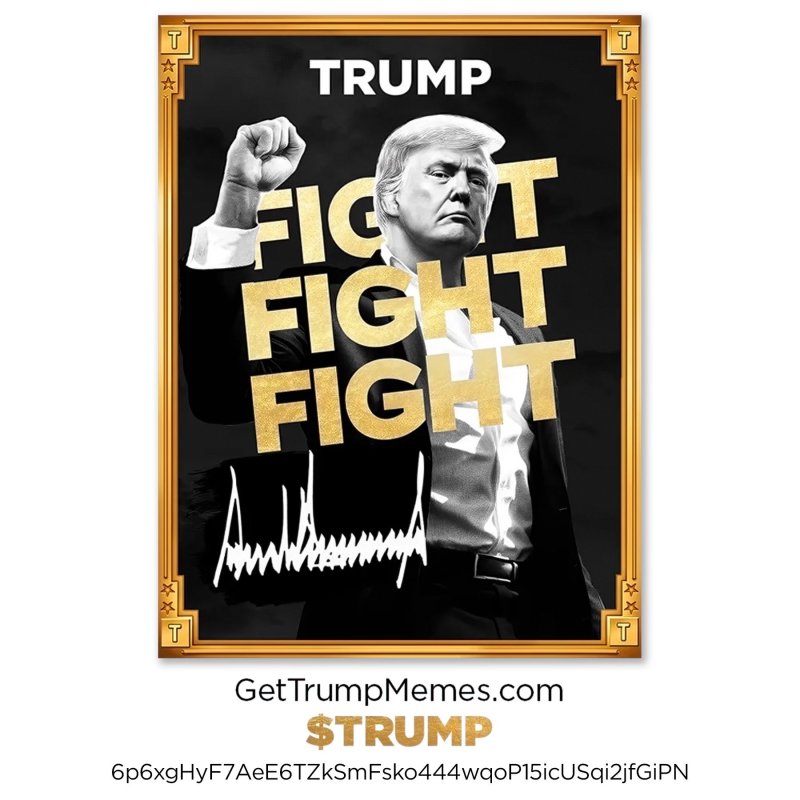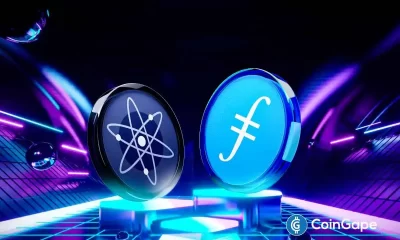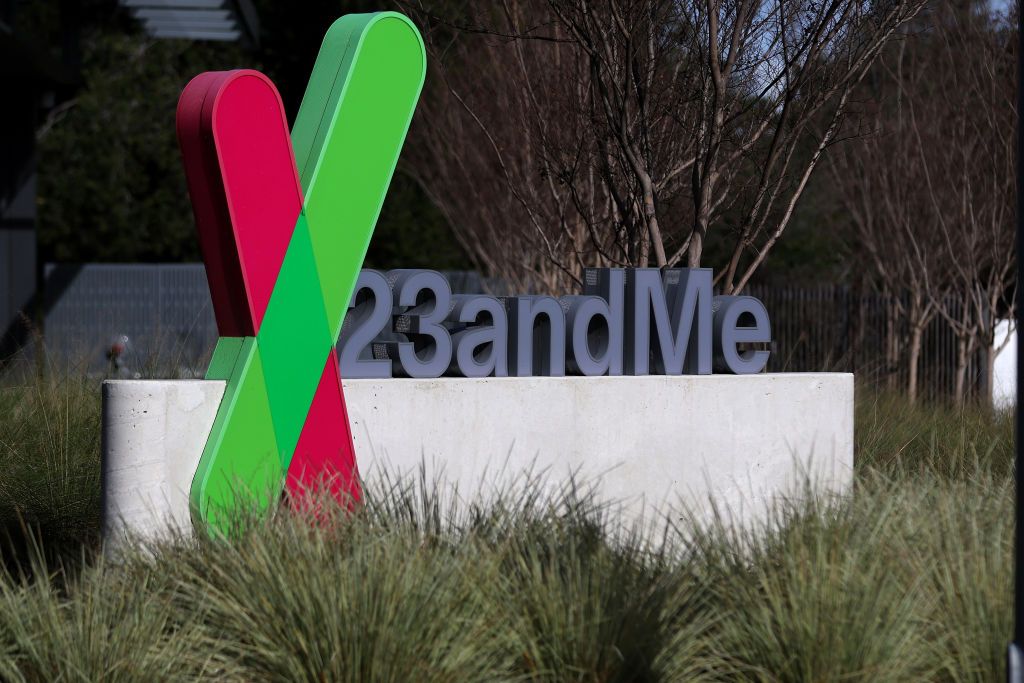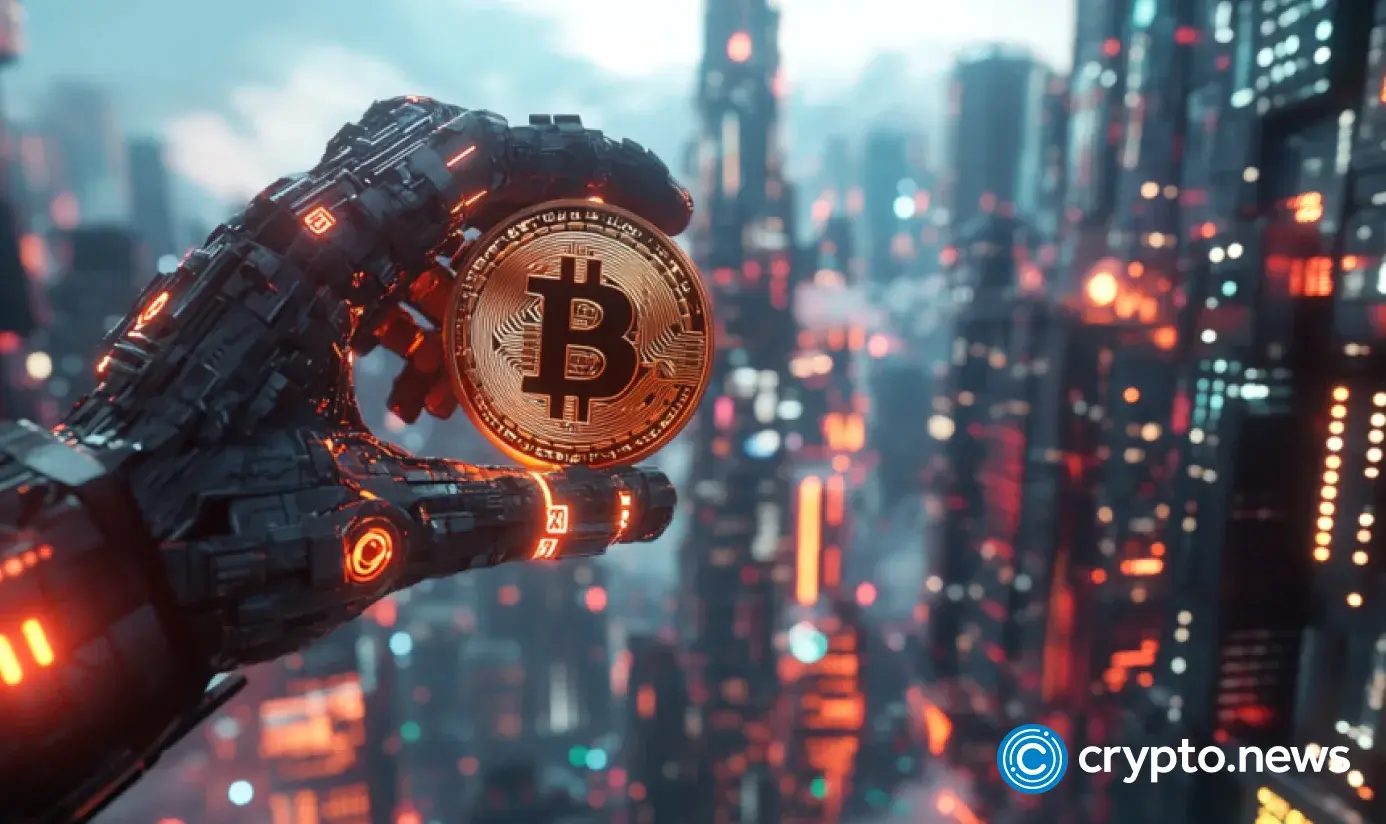Opinion
Trump Likes Crypto: Just As Long As It's For Grifting
Published
2 months agoon
By
admin
When the $TRUMP meme coin dropped Friday evening, no one was surprised. Or at least, they shouldn’t have been. He has a knack for jumping headfirst into endeavors he thinks he can make money on, in self-promoting fashion, that often end in disaster. Some of these ventures include Trump Airlines, Trump Vodka, Trump Steaks, Trump University, Trump Magazine, Trump Plaza Hotel and Casino, Trump Mortgage, Trump: The Game. Crypto is the next game in town he’s decided to throw his hat into.
I’ve already written articles and talked at various lengths about Trump leaning into the crypto space to earn votes in this past election that in many ways was quite successful. At Bitcoin Nashville this past summer, in an effort to garner support for his presidential candidacy, Trump said some notable things including that America will become “the crypto capital of the planet and bitcoin superpower of the world,” that he would fire Gary Gensler, and that he wants all remaining bitcoin to be made in America (concerning from a decentralized point of view, and highly implausible in reality). He also famously said that he would commute the sentence of Ross Ulbricht on Day one, which if he does I will be the first to give credit where credit is due. (For more on this I recommend watching the recent Reason documentary on why Ross should be freed).
Crypto is Donald Trump’s next frontier and combines several things he absolutely loves when it comes to business deals – Quick easy money, self-promotion, America first messaging, and little bureaucratic friction standing in his way. So, what is $TRUMP coin?
It’s built on the Solana blockchain with a total supply of 1 billion tokens. Initially, 200 million tokens are available for circulation, while the remaining 800 million are held by CIC Digital, a Trump Organization affiliate, subject to a three-year lock-up period (which means the Trump family holds 80% of supply…). Following its launch, the $TRUMP coin’s market cap surged, reaching approximately $6 billion. The coin’s price peaked at $33.7. The $TRUMP coin was marketed as a means for supporters to express their alignment with Trump’s ideals, rather than as an investment opportunity, which is hogwash for the pump and dump self-enrichment scheme that he is in my opinion immoral and unethical for creating, and investors (oops, guess we should say “fans”) are stupid for taking part in.
With inauguration on Monday, we’re entering uncharted territory where it’s likely Trump will issue Executive Orders relating to bitcoin and crypto, and now emboldened by the presidency, lack of legal worries, and supporters that I truly believe would be fine with whatever he does. As he famously quoted, “I could stand in the middle of Fifth Avenue and shoot somebody, and I wouldn’t lose any voters, OK?”
Some of these actions could be positive for the Bitcoin industry and advocates in the United States. But many of his actions could also equally benefit the broader crypto space that is rife with pump-and-dump scam coins and useless get rich quick schemes for wealthy insiders and people who have lobbied him throughout this last cycle. The pump and dump crypto landscape, his goofy coins and NFT’s, make sense to Trump. In fact, I’m betting he truly believes this is crypto’s purpose, while knowing little about Bitcoin. Trump has repeatedly said he has “fun with crypto” and ended his keynote address at the Bitcoin Conference this past summer by saying “have a good time with your bitcoin and your crypto and everything else that you’re playing with.” Trump’s experience in and views of crypto and bitcoin are around fun and making easy money. But with Bitcoin, many of us in the space are fighting for much more, which includes Bitcoin’s many use-cases as censorship resistance digital currency, digital gold, a medium of exchange to use in self-custody and via privacy preserving tools, a powerful tool for human rights, and much more. This isn’t a gamble for us…it’s the future of money that challenges the dollar and central bank rule.
If Trump really began to grasp this, based on his track record and previous statements on Bitcoin, he’d be quite against this use of Bitcoin. Or perhaps he knows what Bitcoin is at some level, and would rather promote the “fun” meme coins, and maybe Bitcoin as digital gold, but nothing more. He did after all say in 2021, quite clearly, “Bitcoin, it just seems like a scam. I don’t like it because it’s another currency competing against the dollar.” He added that he wanted the dollar to be “the currency of the world.” (For more on this concept I’d highly recommend following Mark Goodwin and his work on the bitcoin dollar.)
Trump wants you to keep playing with crypto, funneling money to his organizations, but it’s unlikely he’d be a fan of anyone using bitcoin as a competitor to the dollar, circumventing traditional finance or using privacy tools (particularly if you are an adversary or from what he deems a left/woke cause, which perhaps one day he’d classify our nonprofit The Progressive Bitcoiner as). I’ll keep promoting Bitcoin as resistance money, and hope you’ll join me, rather than endlessly gambling on crypto “and everything else you’re playing with.”
This is a guest post by Trey Walsh. Opinions expressed are entirely their own and do not necessarily reflect those of BTC Inc or Bitcoin Magazine.
Source link
You may like


Crypto Trader Says Dogecoin Is at a Critical ‘Make-or-Break’ Level, Updates Outlook on Solana and Avalanche


Bitcoin Covenants: CHECKSIGFROMSTACK (BIP 348)


Illinois State Senator’s Bill Seeks to Claw Back $163 Million Lost to Crypto Fraud


Here’s why Bitcoin, altcoins, and the stock market continued falling on Friday


Bitcoin Falls Back to $83K, XRP, SOL, DOGE Surrender Gains as China Announces 34% Tariffs on All U.S. Goods


BTC Holds $84K, ATOM & FIL Become Top Gainers

For years, the crypto market has thrived on speculation, where excitement, hype and fleeting trends attract value instead of fundamentals. Investors have continually poured money into tokens fueled by viral moments, chasing rapid gains. Time and again, a select few of these investments soar to incredible heights, only to come crashing down. With over 33 million tokens in circulation, the competition to attract attention gets harder and harder and investor attention is ever more fleeting. But DePIN can change this. With compelling businesses attracting real customers and revenue built on well designed token economics, DePIN can set a new standard of fundamentals in crypto.
As our DePIN Token Economics Report outlines, Decentralized Physical Infrastructure Networks (DePIN) offer a number of compelling businesses with fundamental value. Unlike typical crypto projects driven by speculation, DePIN offers a different approach. It uses blockchain technology to support real-world infrastructure, creating tangible value and generating real revenue. Instead of relying on hype, it builds a financial system based on actual demand, making it a more sustainable and practical model.
Rather than resembling major crypto networks like Bitcoin or Ethereum, DePIN operates more like capital-light marketplaces such as Uber and Airbnb, but with key distinctions. While both models connect providers with customers without funding infrastructure, DePIN providers are compensated in tokens that can appreciate in value, akin to Uber drivers or Airbnb hosts receiving equity. Additionally, most DePINs sell to businesses which eliminates the need for massive marketing expenses required in building a consumer brand.
DePIN offers a compelling business model and, unlike memes that come and go, it is the beginning of crypto’s transformation into a mature, revenue-generating industry.
From Hype to Revenue-Driven Models
At its core, DePIN represents a paradigm shift. Traditionally, blockchain-based businesses have relied on hype to attract buyers. In the absence of traditional fundamentals, the industry cycled through endless metrics such as TPS, TVL, Telegram channel size, followers on X and many others. Many projects have attempted to build decentralized ecosystems. But, without real customers paying for services, they have largely functioned as economies fueled by speculation rather than external demand.
DePIN changes this by integrating blockchain technology with physical and digital infrastructure, creating compelling services that generate revenue. Whether it is decentralized cloud computing, wireless networks, mapping or storage solutions, DePIN projects offer services like traditional businesses and with customers who pay for usage. When combined with the correct token economics, it creates a sustainable financial model.
As DePIN generates growing revenue, it is likely to draw institutional investors who have long been skeptical of crypto’s reliance on hype and speculation. The projects that successfully correlate the token demand to actual business growth will not only survive the current market but also set the standard for the next generation of blockchain companies
The report also highlights one of the most compelling aspects of DePIN, the use of buy-and-burn, which removes the need to have an expanding pool of new buyers. Instead, these projects use a portion of their revenue to repurchase and burn tokens, permanently reducing supply and potentially driving long-term price appreciation similar to stock buybacks.
This approach is in stark contrast to most of crypto which relies on new buyers to sustain and grow their value.The buy-and-burn model ensures that as DePIN businesses grow and generate more revenue, their token ecosystems become more resilient to market fluctuations. Some DePIN tokens are already demonstrating this by decoupling from broader crypto market trends, proving that real-world adoption can lead to price stability and long-term investor confidence.
Aligning Incentives for Sustainable Growth
While DePIN offers significant potential, it also comes with challenges. One major concern is transparency, as most projects lack traditional financial reports, audits, or clear revenue statements. However, blockchain itself provides a solution — on-chain verification through buy-and-burn mechanisms allows for real-time financial tracking, giving investors a clearer picture of a project’s health.
Another challenge is customer adoption. Many businesses and consumers remain concerned due to crypto’s volatility. To address this, DePIN projects are introducing fiat payment options and stablecoin rewards, making it easier for everyday users to interact with these decentralized services without needing prior crypto or Web3 experience.
For DePIN to succeed, its incentive structures must be designed to keep all stakeholders — providers, users, and investors aligned. One way to achieve alignment is through staking mechanisms, especially in cloud-based networks where service providers lock up tokens as collateral to guarantee reliability. Projects like Filecoin and Fluence already use this approach, ensuring accountability while strengthening network security. Others, such as Render and Livepeer, take a different route by distributing a share of network revenue to token stakers, creating a system similar to dividends that rewards long-term commitment.
Governance will also be critical as DePIN projects decentralize. To prevent large token holders from short-term profiteering for quick gains, new governance models like quadratic voting and weighted staking are emerging. These frameworks help keep decision-making balanced, ensuring that projects remain sustainable and fair as they evolve.
DePIN isn’t just another blockchain investment vehicle, it is laying the foundation for real, decentralized infrastructure. While meme coins have shown that crypto can generate hype, they rarely create lasting value. In contrast, DePIN is developing businesses that can compete with centralized companies by focusing on real-world utility.
With token models backed by revenue, deflationary supply mechanics, and increasing interest from institutional investors, DePIN is redefining how blockchain networks should function. The projects that successfully address capital efficiency, align incentives, and navigate regulatory challenges will be the ones that lead this next phase of decentralized technology.
As DePIN matures, its token models will continue to evolve. Optimizing capital efficiency through transparent buy-and-burn rates will ensure liquidity while maintaining long-term value. Governance structures will adapt to prevent short-term actors from derailing network growth. By 2026, DePIN will be recognized as the benchmark for sustainable blockchain economies, proving that crypto can function as more than a speculative asset class.
The crypto industry stands at a crossroads. Investors, developers, and institutions must choose between supporting unsustainable token models or supporting projects that create real value. For the space to mature, it needs to move beyond pure speculation, and DePIN is at the forefront of that transformation.
Source link


In all likelihood, the move by the Sei Foundation – the organization behind layer1 blockchain Sei – to buy bankrupt genetic data company 23andMe is a long-shot at best, and potentially just a publicity stunt. But, it remains an incredibly exciting idea that has got a lot of people thinking.
Were such a deal to go through, we would see a Web3 company rescue a Web2 company, which would have enormous ramifications in and of itself. Web2 tech giants are already being challenged in the area of AI by much smaller, nimble, and more flexible companies. However, the purchase of what was once one of Silicon Valley’s shiniest stars by a blockchain upstart would be a total paradigm shift.
Beyond that, a deal would be a win for public understanding for data security and privacy. While we have all been vaguely aware of how Meta, Google, Apple, etc., take and use our data, we have chosen to ignore that for the convenience it affords us.
Then there has perhaps never been such a case as 23andMe, which holds DNA and other data for 15 million people. It shows the public how vulnerable their most personal and intimate data is in the hands of centralized companies and organizations.
It’s one thing when Facebook and Instagram are tracking our shopping and consumer habits and making our sensitive messages and emails vulnerable to leaks. With 23andMe, we’re talking DNA data; the very fabric of our human bodies has just been green-flagged for sale to the highest bidder.
If Sei is not successful, which is most likely, this data can and may well be sold to health or life insurance companies. They may then be able to use this data to potentially exclude people from vital healthcare or insurance policies, thanks to the questionable way in which the U.S. healthcare system is run and its discrimination policies enforced.
Perhaps, finally, this is a turning point at which the public may seriously come to understand the importance of owning their own data. Maybe more people will realize that to keep their data truly safe, they have full control of it themselves through the use of decentralized blockchain technology.
Of course, not every blockchain is created equal. However, Sei certainly claims to be highly secure, and projects like Arweave – which is a permanent storage chain built on a “pay one store forever” model – have applications that can allow you to upload and store your data privately, securely and permanently.
These are two among a growing list of options in our industry, but the point is this: there is simply no centralized solution beyond a piece of paper stored in a Swiss security deposit box with keys buried deep in the ground that can compare. And even then, someone can dig those keys up.
This is a watershed moment for people to understand the importance of data self-sovereignty. And it comes at a time when trust in centralized organizations, companies, and even governments is breaking down. As such, the 23andMe sale could mark a true turning point in history, and one that could reshape how Web3 is seen, understood and utilized.
Source link
Bitcoin
BTCFi: From passive asset to financial powerhouse?
Published
5 days agoon
March 30, 2025By
admin
Disclosure: The views and opinions expressed here belong solely to the author and do not represent the views and opinions of crypto.news’ editorial.
Bitcoin (BTC) has always been the face of crypto, the first thing that comes to mind when you think of this market. But for years, its role has been largely static—held as a store of value, yet rarely used for anything else. Then BTCFi entered the scene: unlike traditional DeFi, which has been dominated by Ethereum (ETH) and other smart contract platforms, BTCFi is built around Bitcoin as the core asset.
In the last quarter of 2024, BTCFi’s total value saw a massive surge—from $800 million all the way to $6.5 billion. The momentum is impressive, to say the least. More institutional players are taking notice, and analysts predict that by 2030, roughly 2.3% of Bitcoin’s circulating supply (about $47 billion) could be actively used in decentralized finance.
So clearly, BTCFi is not just a passing trend. But why is it gaining so much traction? Can it really be called the future of Bitcoin’s utility as a financial asset?
Let’s try to figure it out.
What is BTCFi, and why is it growing now?
BTCFi represents the intersection of Bitcoin and decentralized finance, with the first crypto playing the role of the core asset in this case. Typically, DeFi platforms have been built on blockchains like Ethereum, while Bitcoin holders had to wrap their BTC into ERC-20 tokens (like wBTC) to participate in this field.
This kind of tokenization started picking up the pace around 2020, allowing BTC holders to access DeFi services that are typically not available on the Bitcoin blockchain. These “wrapped” tokens are built in a way that makes them compatible with other blockchain networks. And so, they effectively extended Bitcoin’s functionality.
However, advancements in Bitcoin L2 solutions and LRTs, or layered rollup technologies, are now changing the rules. It is becoming unnecessary for Bitcoin to use “second class citizen” ERC-20 tokens anymore.
BTC LRTs, for example, operate on Ethereum and other chains as well, but use Bitcoin as the primary collateral in transactions. This means unlocking the use of Bitcoin as a yield-generating asset in other networks beyond its native chain.
The emerging Bitcoin L2s, meanwhile, are tackling this blockchain’s long-standing scalability issues, allowing for faster and more cost-efficient transactions. These innovations are going to fundamentally redefine Bitcoin, turning it from a passive store of value to an actively utilized financial asset.
Why is BTCFi the gateway for Bitcoin whales in 2025?
Large Bitcoin holders—miners, in particular—have often used CeFi loans backed by their BTCs to fund their operations since they didn’t want to outright sell those assets. This practice is still going on today, but BTCFi promises to make some changes. And that’s where everything will start from, really: by BTCFi enabling new opportunities for Bitcoin holders to put their assets to work.
Soon enough, Bitcoin whales will start looking at BTCFi as a powerful gateway that can be used to enter the DeFi space. And the way I see it, there are two key factors in 2025 that will influence that perception.
The first is the rise of Bitcoin ETFs. BTC ETFs currently account for almost 6% of all Bitcoin supply, having crossed $100 billion in holdings at the beginning of 2025. With them gaining mainstream traction, Bitcoin is increasingly perceived as the safest and most stable cryptocurrency asset.
This makes it a prime choice for DeFi, attracting large-scale holders who want to use their BTC without selling. Earlier in February this year, Goldman Sachs announced that it had invested $1.63 billion in Bitcoin ETFs. That’s easy proof right there.
The second major factor is the appearance of BTC L2 technologies, which we’ve already covered earlier. Until recently, the lack of scalability and transaction efficiency held Bitcoin back from DeFi adoption. Now, we are going to see a surge of L2 solutions that will enhance the network’s performance. And here’s the important part: they will do so while preserving Bitcoin’s core principles of decentralization and simplicity (and, hence, its robustness).
What DeFi platforms need to do for proper BTCFi integration
There are several challenges that will need to be overcome before BTCFi can achieve truly seamless integration. The biggest technical issue will be ensuring that Bitcoin-based L2 solutions become genuinely trustless. At the present time, they are not quite there, often relying on intermediaries and centralized elements, which goes against Bitcoin’s core philosophy.
The good news is that there’s a lot of R&D going on to make it happen. If successful, it could make the vast amounts of BTCs that are currently just lying there “collecting dust” be useful in DeFi.
Another big challenge is going to stem from people’s trust. Among Bitcoin holders, there are many who do not quite trust Ethereum and the existing Bitcoin tokenization methods. The key to winning them over will lie in creating robust and cost-effective solutions on the native Bitcoin network. Having a fully trustless and inexpensive execution layer on the BTC blockchain could really become the dealbreaker for these people.
The future of Bitcoin: More than just ‘digital gold’
For years, Bitcoin has been carrying the moniker of “digital gold”—a safe-haven asset meant for holding rather than using. These days, this is becoming increasingly untrue. As more institutional players enter the crypto space, the potential for BTCFi to become Bitcoin’s next-level evolution is very real.
The demand is on the rise, and the infrastructure is already being built. For Bitcoin whales looking to maximize their assets without selling, BTCFi could become the perfect answer.
Disclosure: This article does not represent investment advice. The content and materials featured on this page are for educational purposes only.

Michael Egorov
Michael Egorov is a physicist, entrepreneur, and crypto maximalist who stood at the origins of DeFi creation. He is a founder of Curve Finance, a decentralized exchange designed for efficient and low-slippage trading of stablecoins. Since the inception of Curve Finance in 2020, Michael has developed all his solutions and products independently. His extensive scientific experience in physics, software engineering, and cryptography aids him in product creation. Today, Curve Finance is one of the top three DeFi exchanges regarding the total volume of funds locked in smart contracts.
Source link

Crypto Trader Says Dogecoin Is at a Critical ‘Make-or-Break’ Level, Updates Outlook on Solana and Avalanche

Bitcoin Covenants: CHECKSIGFROMSTACK (BIP 348)

Illinois State Senator’s Bill Seeks to Claw Back $163 Million Lost to Crypto Fraud

Here’s why Bitcoin, altcoins, and the stock market continued falling on Friday

Bitcoin Falls Back to $83K, XRP, SOL, DOGE Surrender Gains as China Announces 34% Tariffs on All U.S. Goods

BTC Holds $84K, ATOM & FIL Become Top Gainers

Analysts Eye 20% Breakout If This Level Is Reclaimed

AI and blockchain — A match made in heaven

‘We’re Still in Danger Territory’: Crypto Analyst Unveils Bearish Setup for Bitcoin – Here Are His Targets

Bitcoin Startups Raised Nearly $1.2 Billion

Illinois to End Lawsuit Against Coinbase Over Staking Program: Report

Justin Sun takes legal action against FDUSD issuer
Not a Meme! DePIN Can Take Crypto Mainstream

Cardano Price Can Clinch $1 As It Eyes Bounce From New Support Zone

Glassnode Finds XRP Is Retail’s Top Pick This Cycle

Arthur Hayes, Murad’s Prediction For Meme Coins, AI & DeFi Coins For 2025

Expert Sees Bitcoin Dipping To $50K While Bullish Signs Persist

Aptos Leverages Chainlink To Enhance Scalability and Data Access

Bitcoin Could Rally to $80,000 on the Eve of US Elections

Sonic Now ‘Golden Standard’ of Layer-2s After Scaling Transactions to 16,000+ per Second, Says Andre Cronje

Institutional Investors Go All In on Crypto as 57% Plan to Boost Allocations as Bull Run Heats Up, Sygnum Survey Reveals

Crypto’s Big Trump Gamble Is Risky

Ripple-SEC Case Ends, But These 3 Rivals Could Jump 500x

Has The Bitcoin Price Already Peaked?

A16z-backed Espresso announces mainnet launch of core product

Xmas Altcoin Rally Insights by BNM Agent I

Blockchain groups challenge new broker reporting rule

The Future of Bitcoin: Scaling, Institutional Adoption, and Strategic Reserves with Rich Rines

Trump’s Coin Is About As Revolutionary As OneCoin

Is $200,000 a Realistic Bitcoin Price Target for This Cycle?
Trending

 24/7 Cryptocurrency News5 months ago
24/7 Cryptocurrency News5 months agoArthur Hayes, Murad’s Prediction For Meme Coins, AI & DeFi Coins For 2025

 Bitcoin3 months ago
Bitcoin3 months agoExpert Sees Bitcoin Dipping To $50K While Bullish Signs Persist

 24/7 Cryptocurrency News3 months ago
24/7 Cryptocurrency News3 months agoAptos Leverages Chainlink To Enhance Scalability and Data Access

 Bitcoin5 months ago
Bitcoin5 months agoBitcoin Could Rally to $80,000 on the Eve of US Elections

 Altcoins2 months ago
Altcoins2 months agoSonic Now ‘Golden Standard’ of Layer-2s After Scaling Transactions to 16,000+ per Second, Says Andre Cronje

 Bitcoin5 months ago
Bitcoin5 months agoInstitutional Investors Go All In on Crypto as 57% Plan to Boost Allocations as Bull Run Heats Up, Sygnum Survey Reveals

 Opinion5 months ago
Opinion5 months agoCrypto’s Big Trump Gamble Is Risky

 Price analysis5 months ago
Price analysis5 months agoRipple-SEC Case Ends, But These 3 Rivals Could Jump 500x



